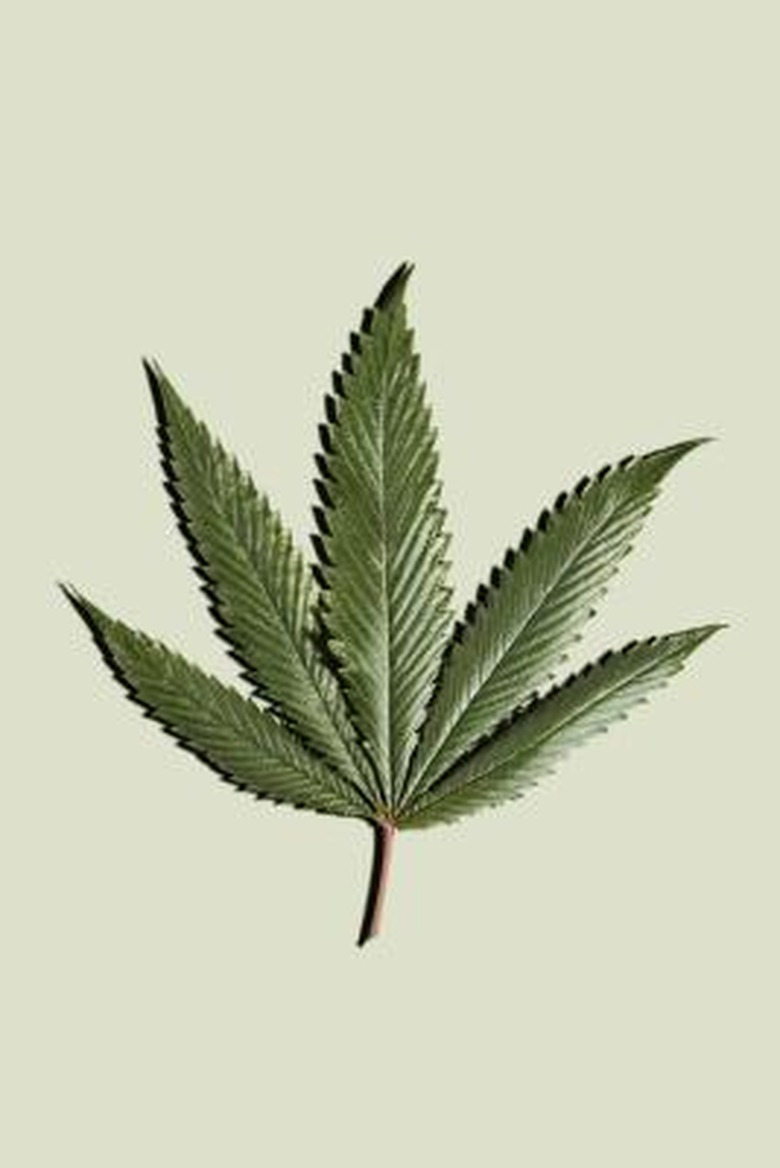What Plants Have THC In Them?
Delta-9-Tetrahydrocannabinol (THC) is a type of _phytocannabinoid30187-4)_, a chemical compound produced by plants. THC is famous for its psychoactive effects on humans and other animals when ingested in the right quantities. Plants that contain THC include cannabis (Cannabis sativa) and, at low levels, hemp (Cannabis sativa ssp. sativa).
Plants That Contain THC
Plants That Contain THC
Cannabis and hemp are the primary plants that contain THC. However, the percentage they contain varies between strains. Horticulturists growing cannabis can cross strains to produce new varieties. The percentage of THC on a dry-weight basis in cannabis varies from 3 percent up to 30 percent. However, 30 percent is considered very high THC content. Many commercially available cannabis strains, where legal, contain up to 20 percent THC.
Hemp and cannabis are very closely related. Industrial hemp strains contain no more than 0.3 percent of THC on a dry-weight basis. This level of THC is so low that hemp is considered non-psychoactive. In addition to THC, hemp and cannabis contain more than 60 other types of cannabinoids.
THC in Leaves and Flowers
THC in Leaves and Flowers
Glandular trichomes are structures on plants that secrete various chemical substances for protection. In cannabis plants, the trichomes secrete THC and other cannabinoids. Cannabis plants have two main types of glandular trichomes: stalked and sessile. These trichomes look like a balloon structure on the end of a stick.
Cannabis is a dioecious plant species, meaning that there are separate male plants and female plants. It is the female flowers, called buds, that have the highest concentration of trichomes. The leaves on female plants, the entire male plant and hemp are also covered in glandular trichomes but in very low numbers. Roots do not have glandular trichomes, and therefore contain no THC.
Phytocannabinoid Roles
Phytocannabinoid Roles
There are many different types of phytocannabinoids that different plants produce. Phytocannabinoids are defined by their type of chemical structure known as bioactive meroterpenoids. Cannabis was the first plant that was discovered to contain phytocannabinoids, but since then, cannabinoids and cannabinoid-like chemicals have been found in several other plants and fungi30187-4).
Currently, the roles cannabinoids play across plant species is poorly understood. It is thought that cannabis uses its cannabinoids like sunscreen and for protection against herbivores.
Under high temperatures or when the plant is bitten by a herbivore, the glandular trichomes burst. The sticky, noxious contents spill over the plant's surface, trapping insect herbivores and protecting the surface of the plant from UV-B rays. Cannabis produces more cannabinoids when exposed to higher temperatures and fewer when soil mineral content is low.
Rhododendron
Rhododendron
Lepidote rhododendron species, native throughout Asia, have glandular scales on their leaves. These glands contain bioactive monoterpenoids with a cannabinoid-like backbone. It is thought that the phytocannabinoids in rhododendrons are used to deter insects.
Liverwort
Liverwort
Liverworts are a group of simple plants, similar to moss because of their lack of vascular tissue. One type of liverwort from the genus Radula is primarily found in New Zealand. Some liverwort species, including Radula perrottetii, produce a psychoactive cannabinoid-like compound similar to THC termed perrottetinene. Researchers are highly interested in perrottetinene for its anti-inflammatory potentials.
While the exact purpose of perrottetinene is unclear, in general liverworts are rarely damaged by insects, small mammals, fungi or bacteria. Liverworts have specialized cells called oil-bodies that contain terpenoids and aromatic oils. The bitter-tasting contents of these oil bodies produce strong smells and a range of bioactivities. These oil bodies are unique to liverworts in the Bryophyta division.
Cannabinoids in Humans and Animals
Cannabinoids in Humans and Animals
Cannabinoid compounds are not unique to plants. Humans and many other animals internally produce endocannabinoids involved in central nervous system development and lipid signaling networks. When humans and other animals ingest plants with cannabinoids, they can produce various therapeutic effects because they interact with cannabinoid receptors in the body.
Unlike THC, consuming other cannabinoids does not produce psychoactive effects. Studies exploring the medicinal benefits of consuming plant-based and synthetic cannabinoids are on the rise. Early studies show they may help minimize nauseous effects in chemotherapy patients, reduce certain symptoms in people with multiple sclerosis and help manage chronic pain.
References
- National Academies Press: Therapeutic Effects of Cannabis and Cannabinoids
- British Journal of Pharmacology: Phytocannabinoids Beyond the Cannabis Plant – Do They Exist?
- Trends in Plant Science: Phytocannabinoids: Origins and Biosynthesis
- Cibdol: Other Plants Containing Cannabinoids
- Scientific American: Lowly Moss-Like Plant Seems to Copy Cannabis
- Plant and Food Research: Liverworts Would Rather Be 'Red Than Dead'
- Congressional Research Service: Defining Hemp: A Fact Sheet
- Way of Leaf: Average THC Strength Over Time: A 50-Year Look at Marijuana Potency
Cite This Article
MLA
Jerrett, Adrianne. "What Plants Have THC In Them?" sciencing.com, https://www.sciencing.com/what-plants-have-thc-in-them-12003871/. 30 September 2021.
APA
Jerrett, Adrianne. (2021, September 30). What Plants Have THC In Them?. sciencing.com. Retrieved from https://www.sciencing.com/what-plants-have-thc-in-them-12003871/
Chicago
Jerrett, Adrianne. What Plants Have THC In Them? last modified March 24, 2022. https://www.sciencing.com/what-plants-have-thc-in-them-12003871/
